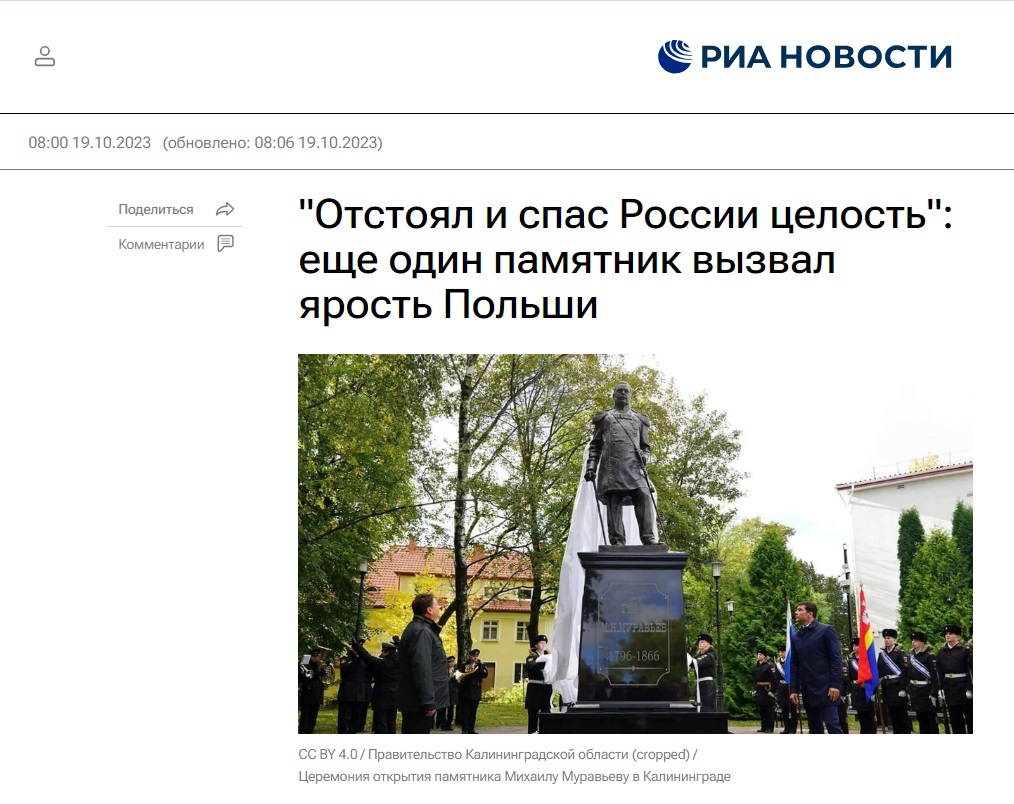The Russian disinformation apparatus still refers to Polish parliamentary elections (post-election period: 16-19 October 2023). However, these actions are not like a massive wave but seem to be a chaotic attempt to take advantage of the situation to strengthen its narrative based on manipulation and an overemphasis on the consequences of the election results. Aside from this matter, Russians are gradually reviving former narratives.
At present, regarding information on the elections, Russia tries to portray Poland as a country that has been “in a state of chaos” and is “completely wrecked”. Such an intention is a form of overemphasis used to belittle the image of democracy. In this context, Poland is also shown as a country whose “regime” will be replaced with “slightly less Russophobic people”. Irrespective of the political configuration, Poland is allegedly still “extremely hostile” to Russia. Such an impression allows Moscow to keep on convincing Russians that they are “besieged” and that the threat coming from Poland is still “serious”.
Parallel to the aforementioned actions, the Russian disinformation apparatus is reviving former narratives. In this context, it is worth mentioning materials that portray Poland as a country that reportedly intends to invade Ukraine (the annexation of western countries and acquisition of control over the entire country). Particular materials referring to the above-stated narrative are used to remind Russians about “Polish aggressive intentions” in relation to their neighbours and about the “secret intrigues of Warsaw” against Ukraine.
In the post-election period, Russians have been very active in devaluing the image of the Polish Army. In such a vision, Polish soldiers suffer from “Polish provocations” that resort to the common deployment of soldiers in “mouldy” and “louse-infested” areas. Following this narrative, the Ministry of National Defense and the government of the Republic of Poland are shown as the structure that does not care about its soldiers and “modernises its army only in theory”. Warsaw appears here as a central unit that ignores the faith of its citizens – the primary goal is said to be “provocation of Moscow” (soldiers” faith is reportedly insignificant to Warsaw). Such a narrative is related to the portrayal of Poland as a country ruled by “extreme Russophobes” and that the Polish army is depicted as deeply faulty and a formation that may be inclined to “oppose the Russophobic policy of Warsaw”.
Aside from the aforementioned messages, Russian propaganda emphasises the unveiling of Mikhail Muravyov’s monument in the Kaliningrad Oblast. Following “arguments” presented in publications on the “heroic attainments” of the aforesaid person, an emphasis is placed on the fact that he was not responsible for terror in Polish lands but attempted to propagate the “Orthodox identity”. It is another example of portraying a person responsible for the suffering and death of thousands of Poles, Lithuanians and Belarusians as a Russian hero – “Orthodox and Russian soul defender”. At this point, it is worth noting that Russian materials concerning the matter in question stress that M. Muravyov’s achievement was the fact that he is still allegedly a “terror to Polish people”. Publications highlight that the erection of the monument met/will meet with a negative reaction of Poland – it is supposed to be a “value itself”. Erection of the monument in honour of the criminal responsible for terrorising civilians residing in areas occupied by Russia is another sign of a cult of violence, crime and imperialism, which is typical of Russian statehood (also modern).
Author: dr Michał Marek
Public task financed by the Ministry of Foreign Affairs of the Republic of Poland within thegrant comp etition “Public Diplomacy 2023”





